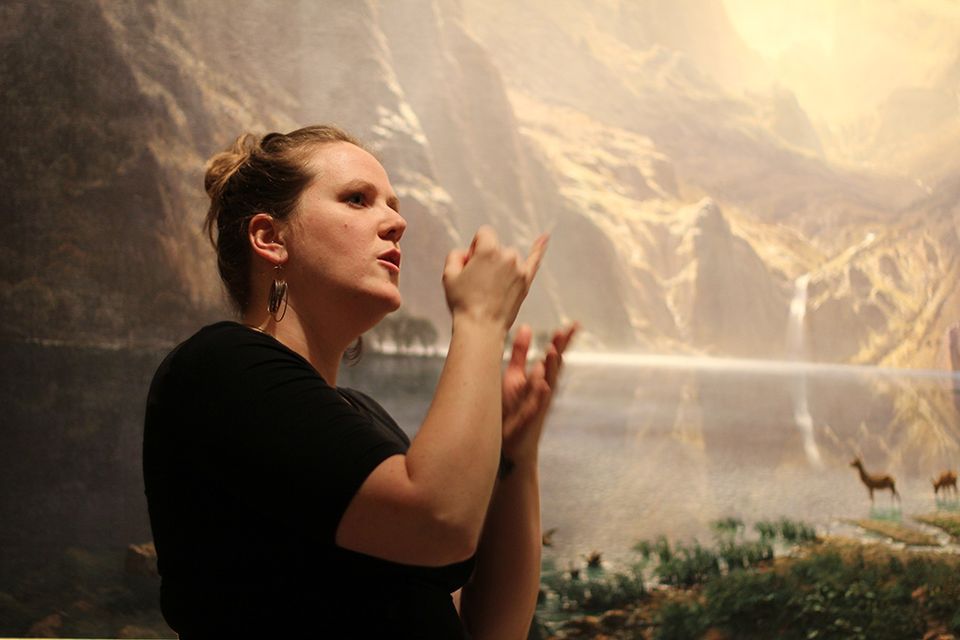

As Emily Blachly leads a group of adults in discussing a 19th-century landscape in SAAM's galleries, several visitors passing through the second floor hallway pause with interest. Two people stop to join the conversation. This is not an unusual occurrence for anyone who gives tours at SAAM, but Blachly's gallery talk is especially intriguing for a visitor to encounter — she was speaking with her hands.
Blachly is a guide with SAAM's Art Signs program, which trains Deaf volunteers to lead artwork-based in-gallery discussions in American Sign Language (ASL). Interpreters accompany the guides to voice the conversation for hearing participants, but the primary language of conversation is always ASL, and the Deaf guides take full leadership.
"The ability to communicate in one's natural language is powerful," said Blachly, who also teaches art at Kendall Demonstration Elementary School, a day school in DC for children who are deaf or hard-of-hearing. "Growing up, I didn't have enough exposure to the intersection of art and the Deaf community."
Washington, DC has one of the largest Deaf communities in the country, due in large part to the presence of Gallaudet University, the premier university dedicated to serving Deaf students. Before Art Signs launched in 2009, however, there were no art museum programs in Washington designed specifically to engage this significant local population.
Carol Wilson, Lunder Education Chair, explained that while SAAM had previously offered sign language interpreters for tours upon request, she saw an opportunity for a more intentional collaboration when a Gallaudet graduate student took an interest in joining SAAM's docent program. The museum was not planning to train a new class of docents that year, but the conversation led to the idea of a new program that would train Deaf guides to give tours in ASL.
"I really wanted our Deaf guides to have a leadership role within the museum," said Wilson. "To be doing tours for their Deaf peers in ASL, and have hearing visitors see our Deaf guides in a leadership position within the museum — that, for me, was really important to the genesis of the program."
Eight years later, Art Signs has trained two classes of Deaf guides, expanded online with a series of ASL videos, sparked partnerships with the National Portrait Gallery for Deaf History Month and Deaf Awareness Month that included film screenings and a Deaf Poetry Slam, and even popped up at the Smithsonian's National Zoo, where an Art Signs presenter gave ASL tours of the Zoo's Washed Ashore outdoor sculpture exhibition. And perhaps most significantly, Art Signs has been used as a model for a growing list of museums interested in trying something similar.
"This program is a seed, and I hope all the museums will have something like it one day," said Blachly.
The next Art Signs gallery talk at SAAM is this evening, Thursday, April 13, at 5:30 p.m. See our calendar for other upcoming Art Signs dates.


















